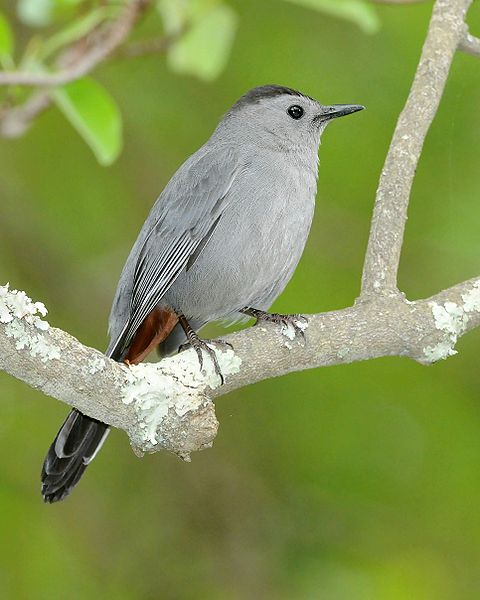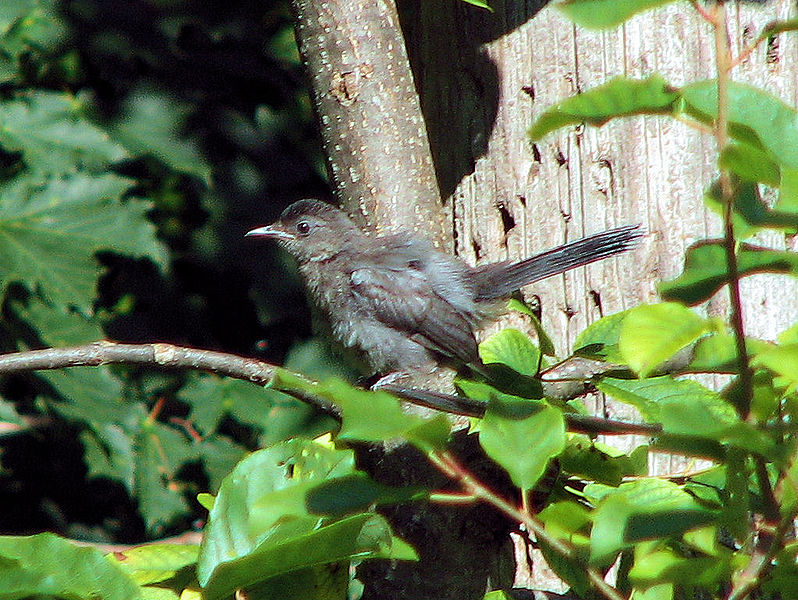|
|
gray catbirdDumetella carolinensis
Identification:
A little smaller than a robin, the Gray Catbird is indeed mostly gray, but with a darker patch on the top of the head and a rusty patch under the tail. Behavior: The catbird’s eponymous thin ‘mew’ can sound almost whiny at times. But its song repertoire is far wider; sometimes its extended riffs sound a bit like R2D2’s chattering in “Star Wars.” It tends to flit around in shrubbery or on the ground looking for insects; it also often eats fruits like raspberries or cherries. What brings it to the SBG? Food, cover, nesting sites. The semi-open habitat with surrounding trees and thick shrubs provide this species’s preferred habitat. Berry producing and insect attracting plants offer food sources, while shrubs provide nesting sites and cover. The Gray Catbird doesn’t mind using non-native shrubs; this may help to explain why it is abundant. When can I see it? Spring, summer, fall. The species winters in the southern United States, Yucutan, and the Caribbean islands. |


